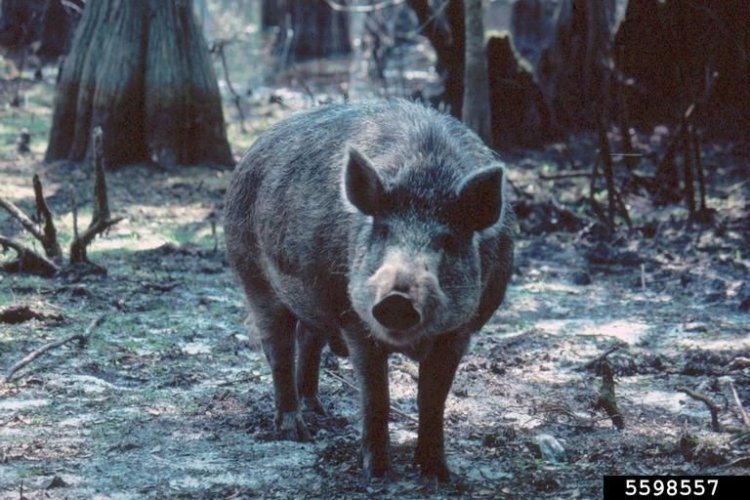Canadian Super Pigs Are Likely to Invade Northern US
Study warns: Canadian super pigs are likely to invade northern US! This alarming finding highlights the potential threat posed by these invasive species. Canadian super pigs, a hybrid of domestic pigs and wild boars, are incredibly adaptable and resilient. As they spread southward, their impact on agriculture, ecosystems, and local wildlife could be devastating.

Canadian 'Super Pigs' Likely to Invade Northern US, Study Warns
There is a "high potential" for wild pigs in Canada to cross into South Dakota, North Dakota, Montana, and Minnesota. These pigs could cause billions of dollars in damage.
Wild Pigs Heading South
Wild pigs (Sus scrofa) might be moving from Canada to northern U.S. states, including North Dakota, South Dakota, Montana, and Minnesota. (Image credit: Krzysztof Banot via Shutterstock)
Feral "super pigs" in Canada might soon cross the border and enter the northern U.S., a new study finds.
The wild pigs are a mix of domestic pigs (Sus scrofa domesticus), wild boar (Sus scrofa), introduced to Canada in the late 1980s for meat and hunting, and hybrids of both, says the Canadian Council on Invasive Species. Farmers released the boars and some pigs when the boar meat market collapsed in the early 2000s, thinking the animals wouldn't survive the harsh Canadian winter. But the pigs thrived.
"These pigs reproduce quickly, are very mobile, and spread easily," said study co-author Ryan Brook, a professor at the University of Saskatchewan in Canada, to Field & Stream magazine. The pigs are also resistant to the cold, so Brook and his team called them "super pigs."
Super pigs might eventually enter North and South Dakota, Montana, and Minnesota, according to the study published May 9 in Biological Invasions. The southern U.S. already has around 6.9 million feral hogs, but the north remains mostly free of them, partly due to strong control efforts.
Potential Damage
However, these control efforts might not stop a pig invasion from the north, which could cause "tremendous damage" to farms and ecosystems, Brook said. "They dig up the ground," he said. "They are an ecological disaster. They eat everything from small mammals like mice to ducks and geese, and even adult whitetail deer."
To track their spread in Canada and predict where they might go next, Brook and his team put GPS collars on 22 feral pigs. The collars sent the pigs' locations every 3 hours for 13 months. Some collars failed or fell off, so the researchers kept data from 10 pigs. They used this location data with habitat types to create a model simulating the pigs' movements.
"We moved from a general concern about pigs crossing the U.S.-Canada border to having very detailed maps showing where they're most likely to move and settle," Brook said.
Habitats and Movement
The pigs preferred areas with a mix of wetlands, deciduous forests, and crops that provided food and shelter. This type of habitat is common across the northern prairies and near the border, the study found. Expansion was most likely near water bodies like Fort Peck Lake in Montana, Devils Lake in North Dakota, and the Missouri River.
Mitigation Strategies
"Our results show the potential for rapid and uncontrolled expansion of wild pigs in the northern prairies of North America," the researchers wrote. To reduce the risk, Brook and his team suggested planting shorter crops that provide less cover or keeping wild pigs out of their preferred habitats by building fences or trapping, as advised by the Canadian Council on Invasive Species.
Some wild pig populations in Manitoba, Canada, were just a two- or three-day walk from the U.S. border, Brook said. "If something doesn't change soon, we're in serious trouble in Canada, and we're not being good neighbors if we let them run wild into the U.S. as well," he said.
What's Your Reaction?






















